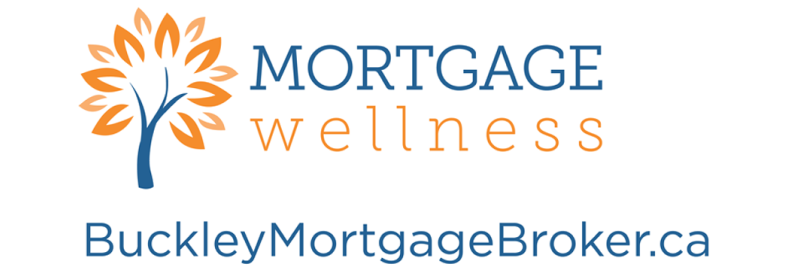Higher Prices for Everything
There is no shortage of people discussing whether we have or do not have inflation. What we do have are higher prices than we had 1, 2, 3 or 5 years ago. We have higher prices for everything from food, energy and consumer goods to housing costs, taxes, and development charges. When economists say inflation is decreasing, what they are saying is that the rate of increase is decreasing from this time a year ago.
Unfortunately, as a result, you and your family are not seeing a reduction in the cost of living. On the contrary, you are seeing your cost of living increase from consumer items such as gasoline, clothes or dining out. Let me ask the question: How many people have changed their spending habits in the last two years? I surely have.
For the economists in the crowd, Canada’s Annual Inflation fell in April to 2.7% from 2.9% in March. This is a further indication that consumer price growth is moderating with a similar inflation of 2.8% in the United States.
Employment remains solid in Canada. Since the start of 2024, an average of 41,500 jobs have been created per month, compared with a monthly pace of 35,000 in 2023. Nonetheless, there are signs of easing in labour market conditions which reflects both lower demand for new workers and a greater supply of potential employees.
June 2024 Interest Rate Change
With an interest rate decrease to 4.75% at the Bank of Canada’s interest rate announcement on June 5, 2024, expectations are mixed but leaning towards a potential rate hold in the coming announcements with a cautious outlook on future cuts. Currently, the policy rate is held at 4.75% — just down from 5.00% — a position it has maintained for several rate decision periods amidst signs of easing inflation and economic slowdown.
Economists are divided on the likelihood of a rate cut in July. Some indicators suggest a more dovish stance from the Bank of Canada, reflecting confidence in the gradual decline of inflation. Recent data shows that core inflation metrics are moving in the right direction, which could support the case for a rate reduction in the near term seeing as Canadian GDP is softer than expected at .4% on a q/q basis and 1.7% annualized. However, the central bank has expressed the need to see sustained downward momentum in inflation before committing to cuts.
The Bank of Canada has indicated that while an interest rate cut is “within the realm of possibilities” for June and July, it remains cautious, emphasizing the importance of seeing consistent economic data before making such a move. Analysts from Morningstar and other financial institutions have noted that while the sentiment has shifted slightly towards potential easing, a definitive cut might be more likely later in the year if positive trends in inflation and economic stability continue.
There is a limit to how far U.S. and Canadian interest rates can diverge but “certainly we are not close to that limit”, Bank of Canada Tiff Macklem told the House of Commons finance committee last month. He went on to say “We can run our own policy so our interest rates in Canada don’t need to be the same as the U.S. rate or global rates. But there is a limit to how far they can diverge.”
From today’s Bank of Canada’s Press Conference with Governor Tiff Macklem and Deputy Governor Carolyn Rogers
- On the economy: so far it looks like it will be a soft landing
- The pace of rate cuts is likely to be gradual
- We are determined to return inflation to the 2% target level
- We will be considering further rate cuts “one meeting at a time”
- We don’t need to move in lockstep with the Federal Reserve
- On the impact on housing: “We will see how it goes”
In summary, while there is a growing possibility of continuous rate cuts, the Bank of Canada is likely to proceed with caution, monitoring economic indicators closely before making future rate decisions. There have been six consecutive rate decisions by the central bank and we have seen the overnight rate remain unchanged, until today, with a rate reduction to 4.75%. Following the first cut, other cuts may be several announcements away. In addition, do not expect rates to go back to where they were in the early stages of the pandemic.
Housing Affordability in Canada
Unless you live outside Southern Ontario, Vancouver or Halifax, home ownership will remain a challenge. With a continued short supply of homes, affordability may not increase, however, life events will continue to make properties available for sale, i.e. new listings. The predicament of politicians is that they are champions of increased affordability; however, they avoid the idea that current home values may have to fall to make housing more affordable because I don’t see income levels rising substantially.
Due to rising home prices, affordability conditions worsened across Canada in April. It became more difficult to qualify for a mortgage in 10 out of 13 major markets last month.
Average prices across the country came in at $488,862 in 2018, but have since surged to $678,282, a jump of nearly 39%.
A recent Bank of Montreal survey determined the majority of Canadians aspiring to buy a home say they will push their plans to next year or later to wait for interest rates to drop. Bank of Montreal says 72% of respondents hoping to buy a home will wait until borrowing costs fall increasing by 4% from last year.
Mortgage Renewals
Seventy-six percent of Canadians with mortgages will be renegotiating their mortgage during the next 3 years (by the end of 2026.)
Variable rate clients in Toronto and Vancouver are showing signs of stress because payments automatically adjust according to Scotiabank. BMO is also reporting some delinquencies. Therefore, a decrease in variable rates will be welcome to this group.
With an interest rate decrease, there will be less panic over renewal risk and consumers will be interested in early renewal offers from their mortgage provider over the next year to two.
The key for renewals is to consult with your mortgage professionals early without locking in a rate with your bank until you are close to maturity.


